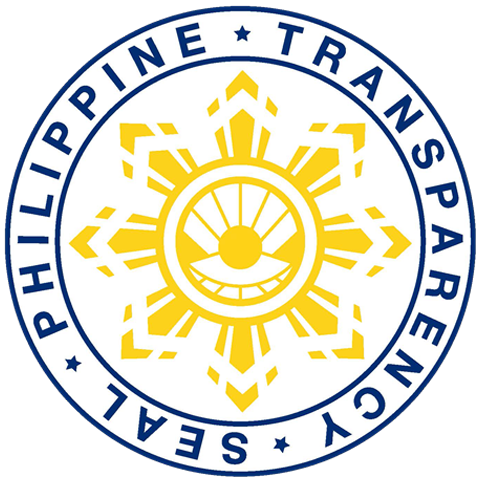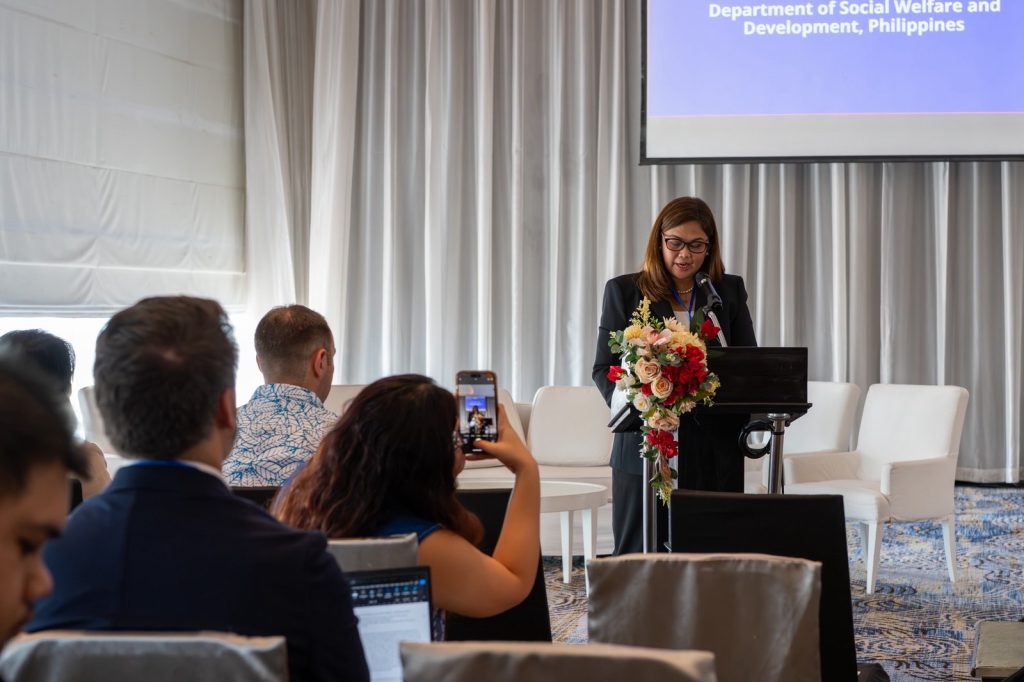
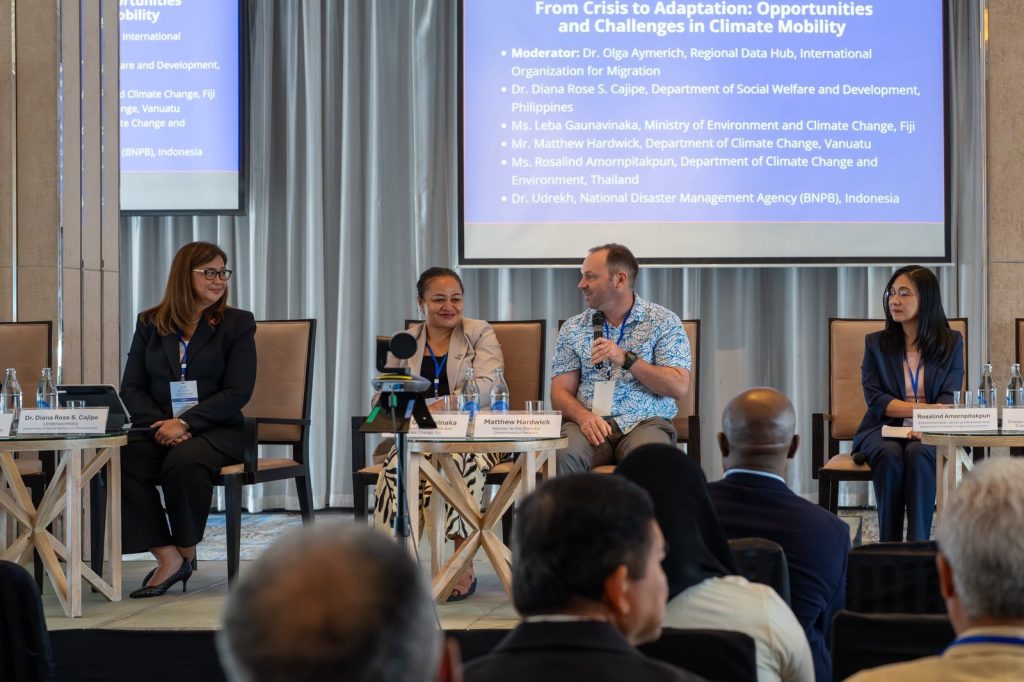
With climate mobility emerging as a defining challenge of the 21st century, the Department of Social Welfare and Development (DSWD), represented by Disaster Response Management Group (DRMG) Undersecretary Diana Rose S. Cajipe, MD, FPOGS, reaffirmed the Philippines’ strong commitment to proactive action during the 2nd Regional Climate Displacement Symposium in Asia and the Pacific. The event, organized by the International Organization for Migration (IOM) through its Climate Mobility Innovation Lab (CMIL), was held in Bangkok, Thailand on 25–26 June 2025.
According to the 2024 report by the Internal Displacement Monitoring Centre (IDMC), and the Asian Development Bank (ADB), the Asia-Pacific region has already recorded 177 million internal displacements between 2014 and 2023, with projections indicating more than 89 million additional displacements by 2050 due to slow-onset hazards. In response, the symposium brought together regional and global experts, government officials, civil society representatives, and technical partners to tackle one of the most pressing humanitarian and development issues of our time: climate mobility.
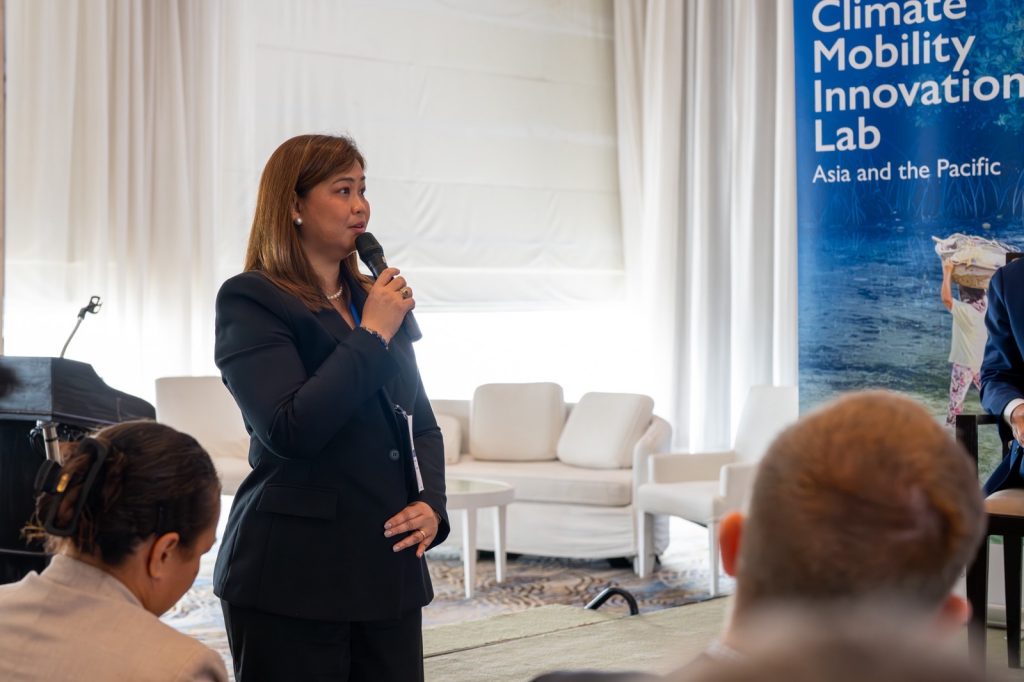
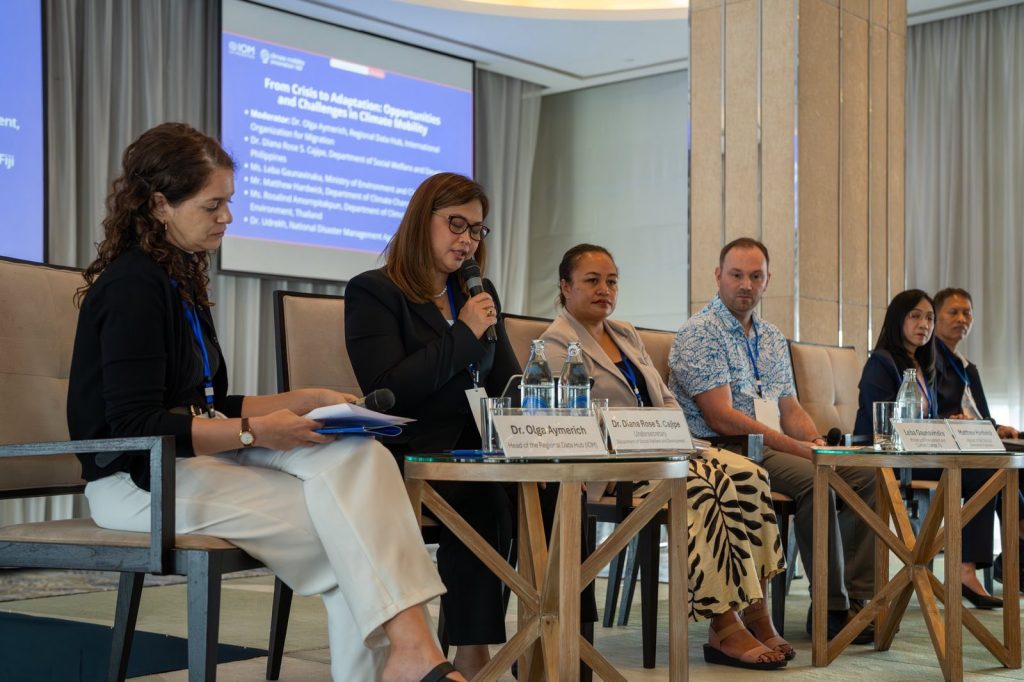
In her opening address, Undersecretary Cajipe emphasized the lived and recurring experiences of climate displacement in the Philippines, citing catastrophic events such as Typhoon Haiyan, the recurring floods in Mindanao, droughts in Luzon, and the rising sea levels threatening coastal communities in the Visayas.
“This is more than a symposium. It is a call to action,” she stressed. “[T]hese are not isolated tragedies—they are part of a global pattern.” She concluded with a strong call for unity and urgency: “Guided by science, driven by compassion, and anchored in the lived realities of those we serve.”

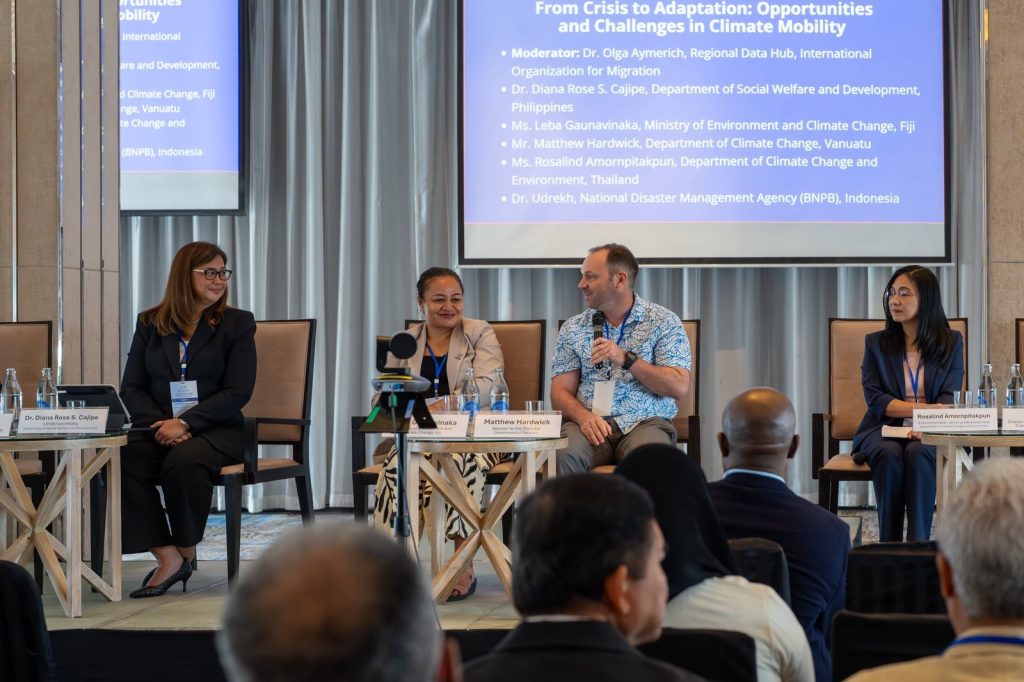
Undersecretary Cajipe also responded to a question on the most significant shift in climate-related migration or displacement in the Philippines over the past five (5) years. She shared that: “Over the past five years, the Philippines has experienced a significant increase in protracted and recurrent displacement, with a total of three million families displaced due to both sudden-onset and slow-onset climate-related hazards. This alarming figure underscores the intensifying impacts of typhoons, flooding, landslides, volcanic eruptions, and other environmental stressors on Filipino communities. A notable trend is the rise of preemptive evacuations and cyclical displacement in high-risk, hazard-prone areas. These patterns have led to a cycle of temporary sheltering, repeated returns, and fragile recovery—placing immense pressure on both affected populations and local government units.”
In response to this growing challenge, she highlighted the Department’s proactive efforts, including but is not limited to, the institutionalization of evacuation center management protocols, improved displacement tracking via the Disaster Response Operations Management, Information and Communication (DROMIC), and extensive support to LGUs for early recovery.
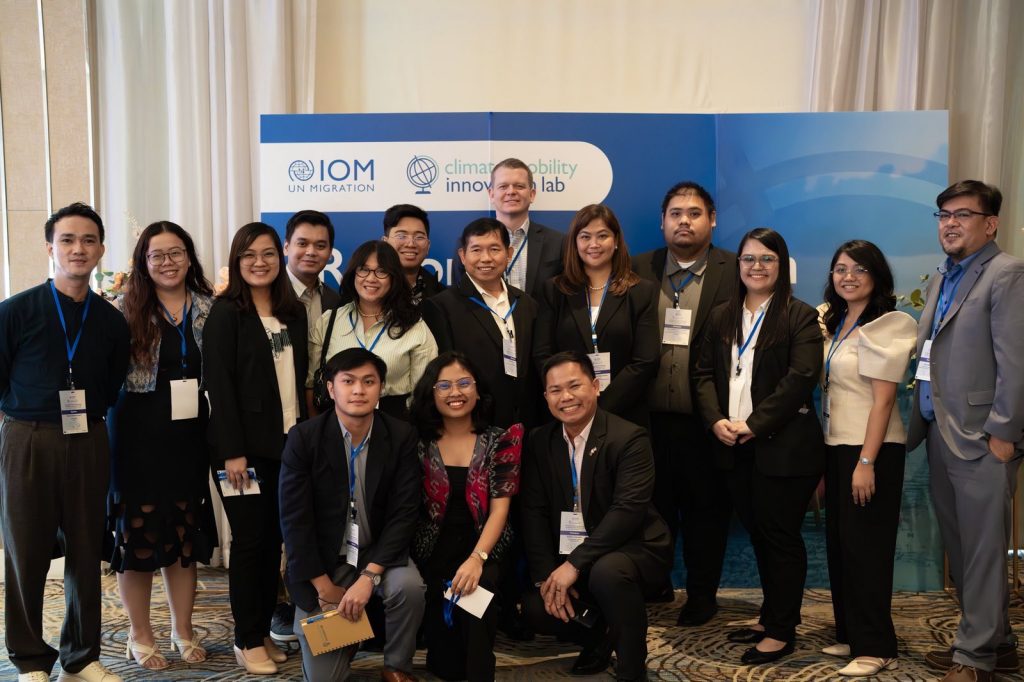
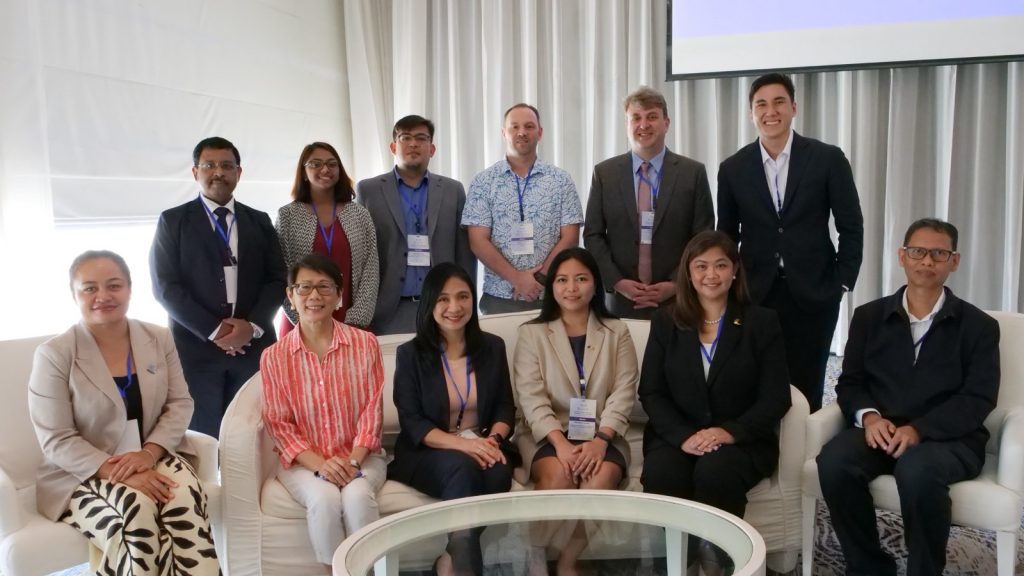
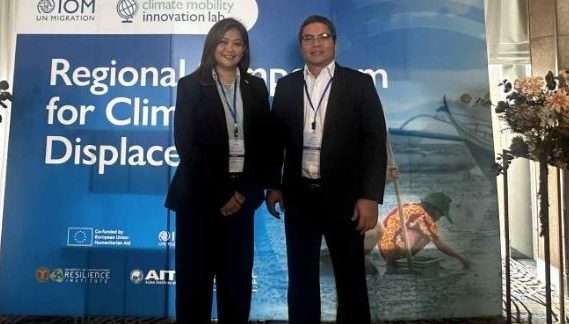
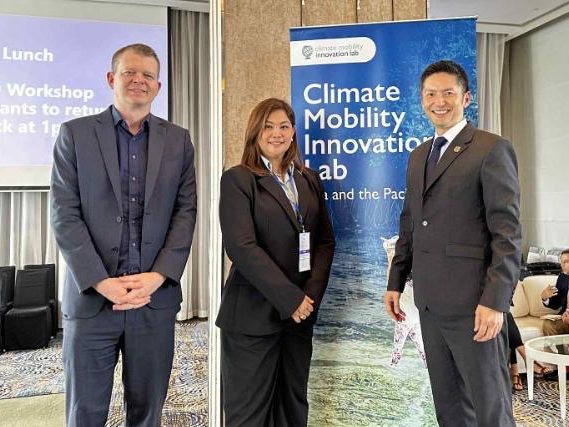
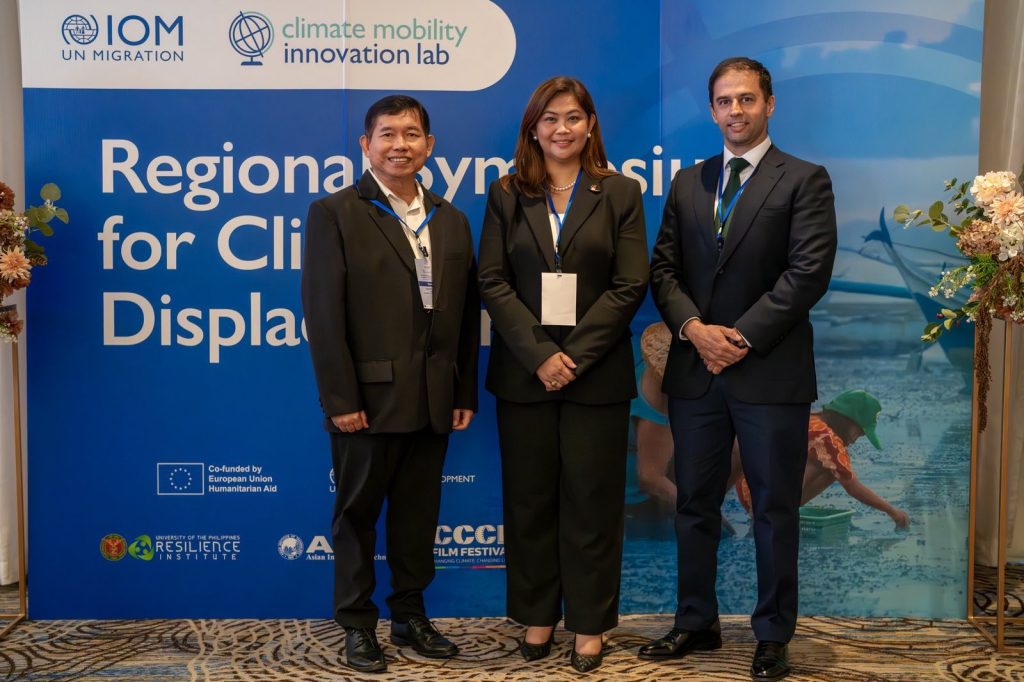
She also championed the Department’s promotion of the Risk Resiliency Program for Climate Change Adaptation and Mitigation (RRP-CCAM), which fosters climate-resilient livelihoods and infrastructure, enabling at-risk communities to adapt in place and reduce the risk of displacement.
Through these holistic approaches, the Department reaffirms its commitment to safeguarding the rights, livelihoods, and well-being of Filipinos most vulnerable to the compounded effects of climate change. This response capped Undersecretary Cajipe’s remarks during the panel discussion on climate mobility’s emerging challenges and opportunities.



